Author: Marshall Schott
IPA is currently all the rage and has been for the better part of the last two decades. It seems beer drinkers just can’t get enough hoppy goodness to satiate their seemingly bottomless desires, which likely explains the development of numerous off-shoot versions of this popular style, one of the more recent being Brut IPA.
Invented by Kim Sturdavant of the shuttered Social Kitchen and Brewery¸ Brut IPA was designed to pair the hoppiness of American IPA with the dryness of champagne, hence the name. To accomplish this, the grist often consists primarily of Pilsner malt with some also preferring to add a dose of simple sugar. However, the neatest trick to maximizing attenuation and ultimate dryness of Brut IPA lies not in traditional brewing processes or ingredients, but rather the use of exogenous enzymes that break starches from malt down to simpler sugar that is more readily metabolized by yeast.
Given its uniqueness, Brut IPA is considered a specialty IPA and thus falls under category 21B in the BJCP Guidelines, which is yet to include an official description of this novel style. As such I’ll defer to the description provided by Amahl Turczyn of Zymurgy:
A very pale, very dry, highly effervescent variant of American IPA, usually highly hopped with aromatic hops, but with far less actual bitterness.
When Brut IPA first hit the scene, I tried every commercial example I could get my hands on, as I found the idea of a crisp, clear, dry, clear, refreshing, and especially clear IPA quite appealing. Unfortunately, I wasn’t a fan of most, in fact the only ones I enjoyed were brewed by House Of Pendragon and Riley’s Brewing, both local to me. Perhaps because of this, I wasn’t terribly interested in making a Brut IPA myself, that is until I was contacted by the folks from Novozymes asking if I might be interested in trying some of their brewing enzyme products. Wet behind the ears, I took this as an opportunity to step outside of my brewing comfort zone and experiment with brewing an atypical style using an atypical approach.
| BREWING THE BEER |
This being my first Brut IPA, I looked to the internet for recipe ideas and settled on something I thought would do well with the ingredients I had on-hand.
Short & Shoddy Brut IPA
Recipe Details
| Batch Size | Boil Time | IBU | SRM | Est. OG | Est. FG | ABV |
|---|---|---|---|---|---|---|
| 5.2 gal | 20 min | 23.7 IBUs | 3.6 SRM | 1.054 | 1.006 | 6.3 % |
| Actuals | 1.054 | 1.002 | 6.9 % | |||
Fermentables
| Name | Amount | % |
|---|---|---|
| Pelton Pilsner-style Malt (Mecca Grade) | 9 lbs | 81.82 |
| Shaniko Wheat Malt (Mecca Grade) | 1 lbs | 9.09 |
| Table Sugar (Sucrose) | 1 lbs | 9.09 |
Hops
| Name | Amount | Time | Use | Form | Alpha % |
|---|---|---|---|---|---|
| Mosaic LupoMAX | 15 g | 10 min | Boil | Pellet | 17.5 |
| Mosaic LupoMAX | 20 g | 3 min | Boil | Pellet | 17.5 |
| Citra | 14 g | 3 min | Boil | Pellet | 13.1 |
| Galaxy | 14 g | 3 min | Boil | Pellet | 18.1 |
| Mosaic LupoMAX | 25 g | 3 days | Dry Hop | Pellet | 17.5 |
| Citra | 14 g | 3 days | Dry Hop | Pellet | 13.1 |
| Galaxy | 14 g | 3 days | Dry Hop | Pellet | 18.1 |
Miscs
| Name | Amount | Time | Use | Type |
|---|---|---|---|---|
| Ondea Pro (Novazymes) | 7.00 ml | 0 min | Mash | Other |
Yeast
| Name | Lab | Attenuation | Temperature |
|---|---|---|---|
| Flagship (A07) | Imperial Yeast | 75% | 60°F - 72°F |
Notes
| Water Profile: Filtered Fresno tap water with some gypsum and calcium chloride |
Download
| Download this recipe's BeerXML file |
I started this brew day at 9:13 AM by collecting the full volume of filtered water.
I opted for a more balanced mineral profile in this beer and tossed in what seemed to be about equal amounts of gypsum and calcium chloride.
As the water was heating up, I weighed out and milled the grain.
Once the water was properly heated, I stirred in the grist then checked to make sure it was at my target mash temperature.
At this point, I measured out and added the recommended amount of Novozymes Ondea Pro, a blend of 6 different enzymes said to “secure efficient viscosity, turbidity reduction, protein degradation, and controlled attenuation.”
The mash was left alone for just 30 minutes, during which it was intermittently stirred.
During the mash rest, I measured out the kettle hop additions.
With the mash complete, I removed the grains and flipped the switch on my controller to begin heating the wort, at which point I added the table sugar.
The wort was boiled for a brief 25 minutes with hops added at the times listed in the recipe.
Once the boil was finished, I quickly chilled the wort with my IC.
A refractometer reading showed the wort was at 13.3 ˚Bx, or 1.054 OG, for a brewhouse efficiency of 65%.
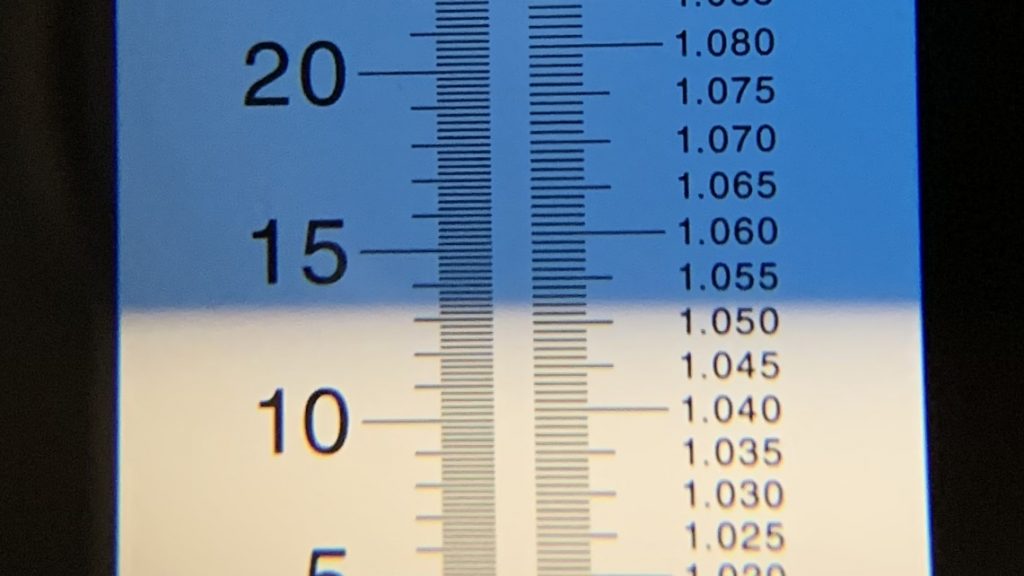
I then racked the chilled wort to my fermentation vessel.
With the wort sitting at 77˚F/25˚C, I direct pitched a pouch of Imperial Yeast A07 Flagship.
The fermenter was placed in my chamber where it was hooked up to my CO2 capture device and left to ferment at 68°F/20°C. The time was 10:58 AM for a total brew day time of 1 hour 45 minutes.
By the following morning, naturally produced CO2 had pushed all of the sanitizer out of the primary keg and fermentation was kicking. I returned 2 days post-pitch to add the dry hop charge, which I’d previously measured out.
With signs of activity absent after another 3 days, I took a hydrometer measurement showing the beer dried out to 1.002 FG, resulting in a 6.8% ABV.
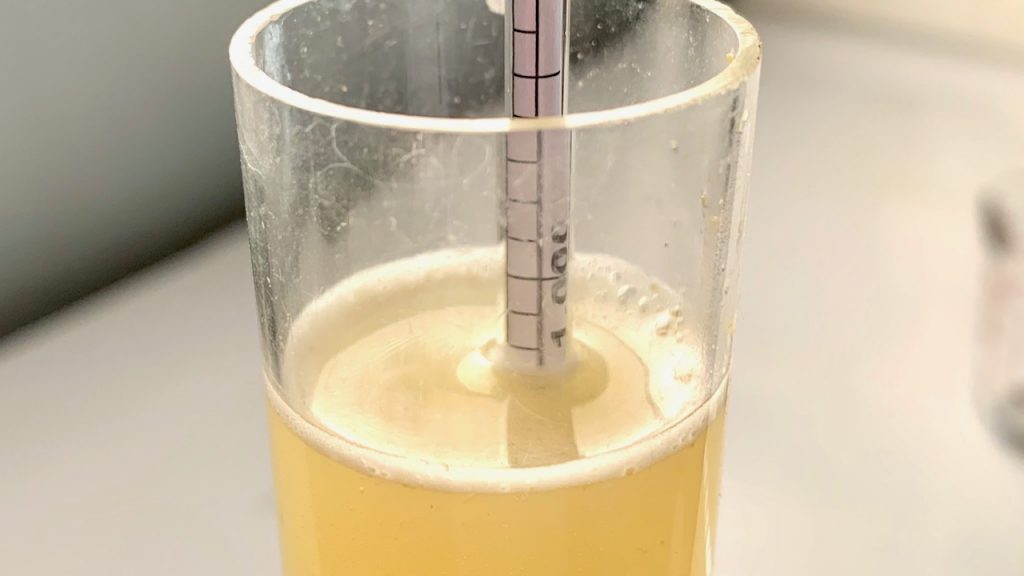
At this point, I swapped out the fully purged keg for a CO2 canister set to 1 psi then cold crashed the beer to 33˚F/1˚C overnight before fining with gelatin.
The following evening, I racked the beer to the naturally purged keg.
The filled keg was placed in my keezer and burst carbonated at 45 psi for 24 hours in hopes of achieving a nice sparkle, after which I reduced the gas to a serving pressure of 14 psi. I allowed the beer to cold condition for 4 days before I began drinking it.
| RESULTS |
Due to social distancing practices as a result of the COVID-19 pandemic, data for this Short & Shoddy beer was unable to be collected in our typical manner. As such, temporary adaptations were made involving the author thoroughly evaluating the beer in as unbiased a fashion as possible.
I completed a series of 3 thorough evaluations over the course of a weekend. My goal in doing this was to condense my most consistent impressions while accounting for any possible external factors that may have influenced my perception.
APPEARANCE
Pale straw in color with a sticky white cap of foam that hung around the entire pint and left nice lacing on the glass. While clear enough to see through, the beer maintained a disappointing haze despite being fined with gelatin.
AROMA
The most prominent aromatics I got from this beer was blueberries, weed, and overripe mango, all clearly contributions of the hops used in this recipe. While malt aroma was lacking by design, I did get a hint of vanilla, which I’ve come to associate with Mecca Grade Estate Malt’s Pelton. I perceived no notable fermentation derived aromas at all.
FLAVOR
I detected a touch more bready malt character on the palate than I did the nose, though expectedly, the hops were at the forefront of this beer’s flavor, presenting a pleasant blend of ripe citrus fruit, blueberry, and that unmistakable touch of vanilla. Altogether, this created a curious impression of fruited yogurt, despite having no acidity at all. Unlike other types of IPA, the flavor of this Brut IPA didn’t linger on the palate very long at all, washing away mere seconds after swallowing, almost as if it was never there.
MOUTHFEEL
In addition to being dry as bone, I carbonated this beer quite highly, which I feel helped to limit the perception of thinness. Bitterness levels were low-moderate and I detected no astringency or warming from the alcohol.
OVERALL IMPRESSION
Having only sampled a few commercial versions of Brut IPA, my schema for this style is based largely on what I’ve read and heard from those who have more experience with it. All in all, I was pleased enough with how this Short & Shoddy Brut IPA turned out to keep it on tap, though it wasn’t quite as satisfying as I’d hoped. The dryness was definitely on point, but in future batches, I plan to use more citrus-forward hops that, unlike Mosaic, don’t impart as much dank character.
| CONCLUSION |
For as long as brewing has been around, it’s pretty cool too see new styles continue to emerge, which these days is driven largely by the ingenuity of clever lovers of hoppy IPA. In what appears to be a response to the popularity of thick, hazy New England IPA, Brut IPA was designed to be an exceedingly dry, crisp, and clear hoppy ale that offered drinkers a new refreshing alternative.
With dryness as a primary goal, brewers of Brut IPA rely on a few common techniques including a simple grist of mainly Pilsner malt and lower mash temperatures to encourage beta-amylase activity. Additionally, to ensure maximum attenuation, it is very common to use exogenous enzymes that break malt starches down into sugars that yeast can more easily digest. Despite cutting the mash rest short in this Short & Shoddy Brut IPA, the beer achieved a solid OG and ended up with an apparent attenuation of 96%, which I have to believe was helped by my use of Novozymes Ondea Pro during the mash.
Despite not detecting any notable off-flavors in this beer, there was just something about I thought was a little weird. While I initially presumed it was the relatively heavy use of potent Mosaic LupoMAX hops in such a dry style, a comment by my friend Brad Gaines of Crow & Wolf Brewing made me think it may just be something associated with the style. Brad said that in every commercial Brut IPA he’s tried, he perceives a slight yogurt flavor that he’s not a big fan of. After hearing this, I couldn’t not perceive it in my Short& Shoddy Brut IPA, though it wasn’t all too unpleasant to me. I look forward to brewing more Brut IPA in the future using different hops, yeasts, and even enzymes, as I’m not convinced the style is to blame, per se, but that its dryness may not work as well with some flavors as it does with others.
If you have thoughts about this Short & Shoddy brew, please feel free to share it in the comments section below!
Support Brülosophy In Style!
All designs are available in various colors and sizes on Amazon!
Follow Brülosophy on:
FACEBOOK | TWITTER | INSTAGRAM
If you enjoy this stuff and feel compelled to support Brulosophy.com, please check out the Support page for details on how you can very easily do so. Thanks!


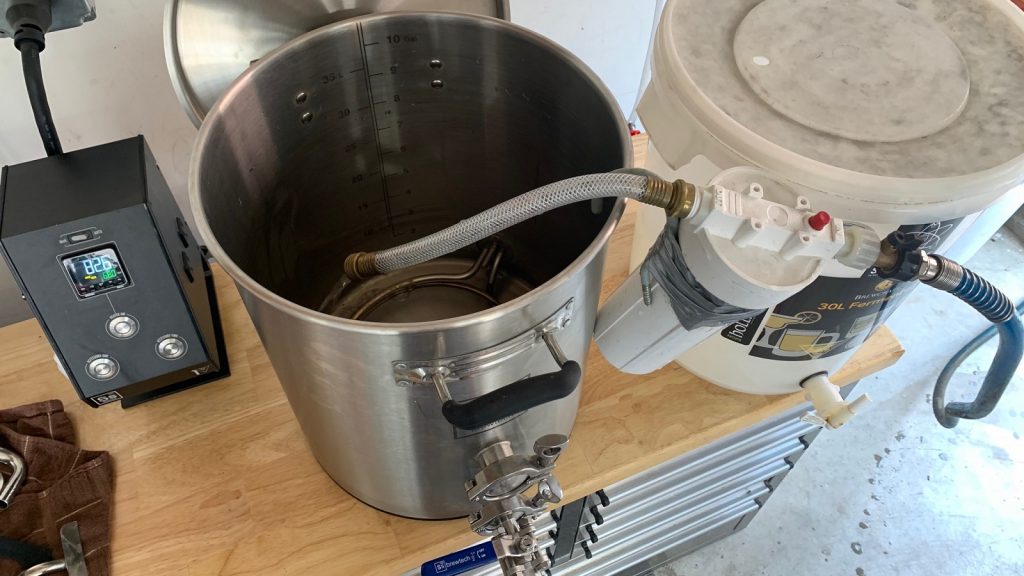
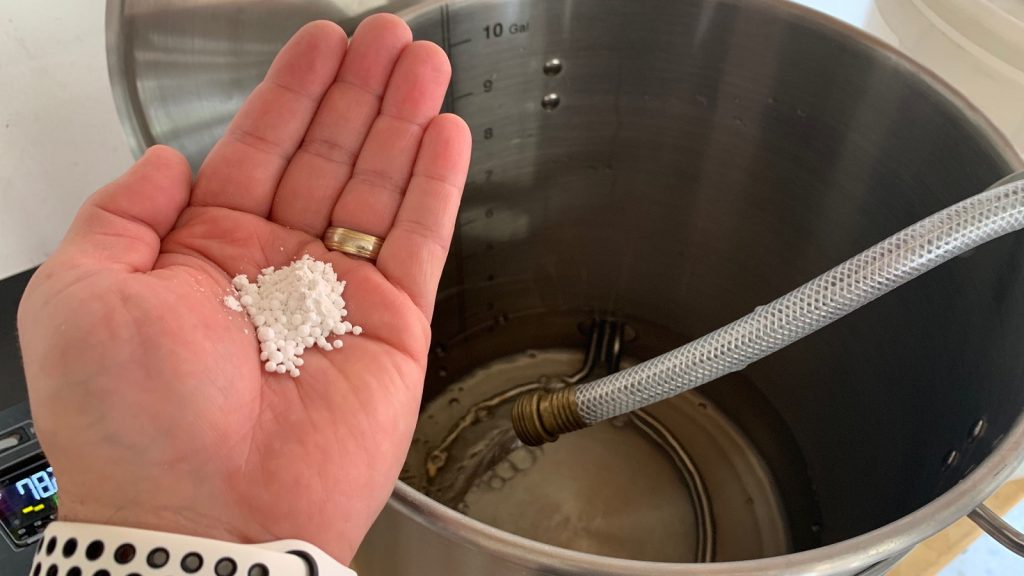
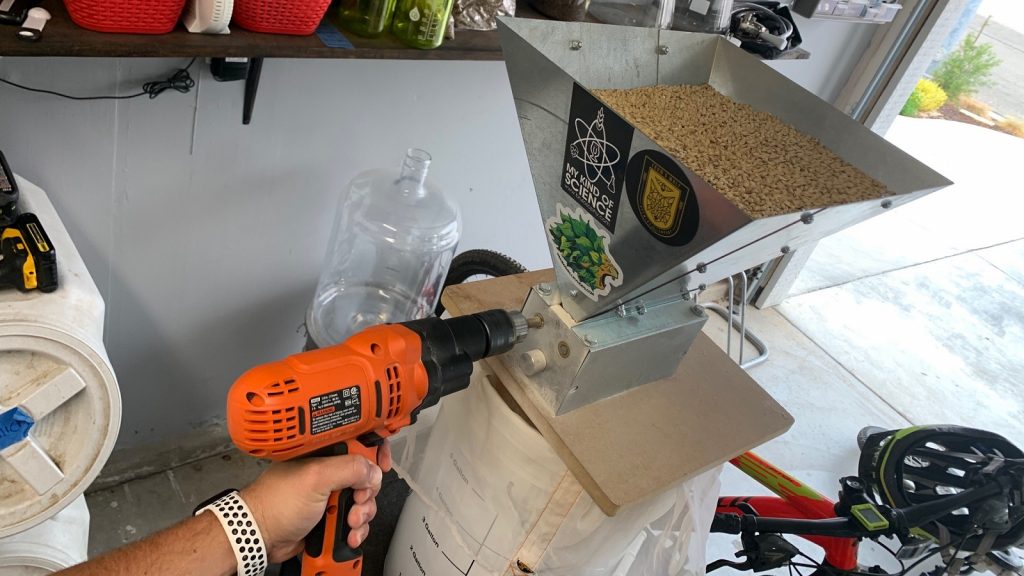
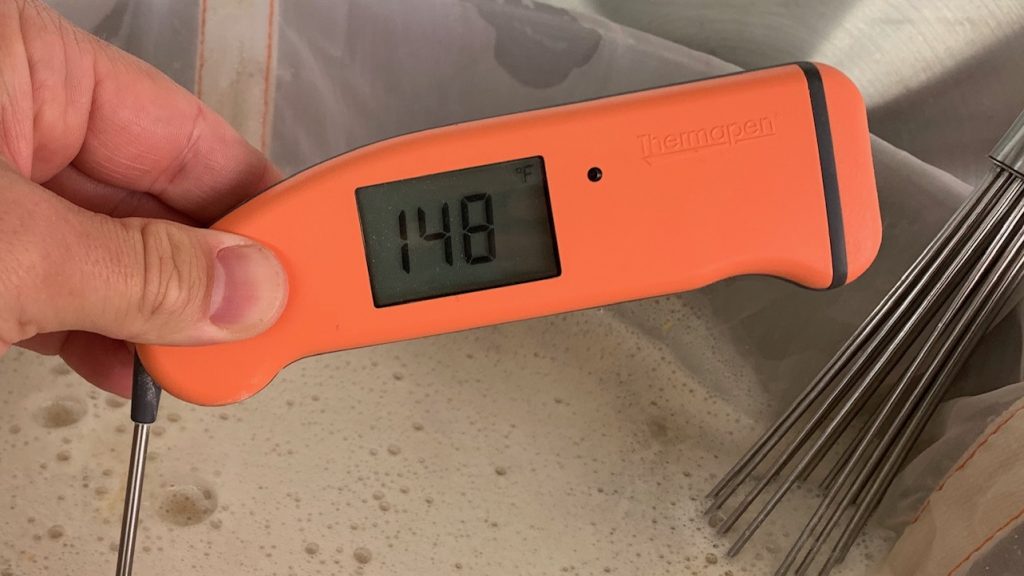
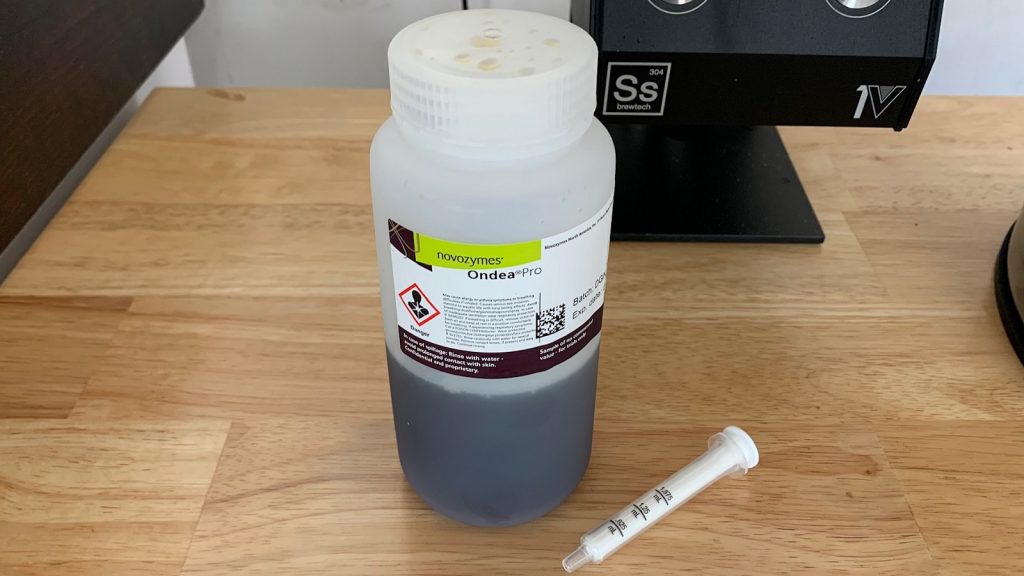
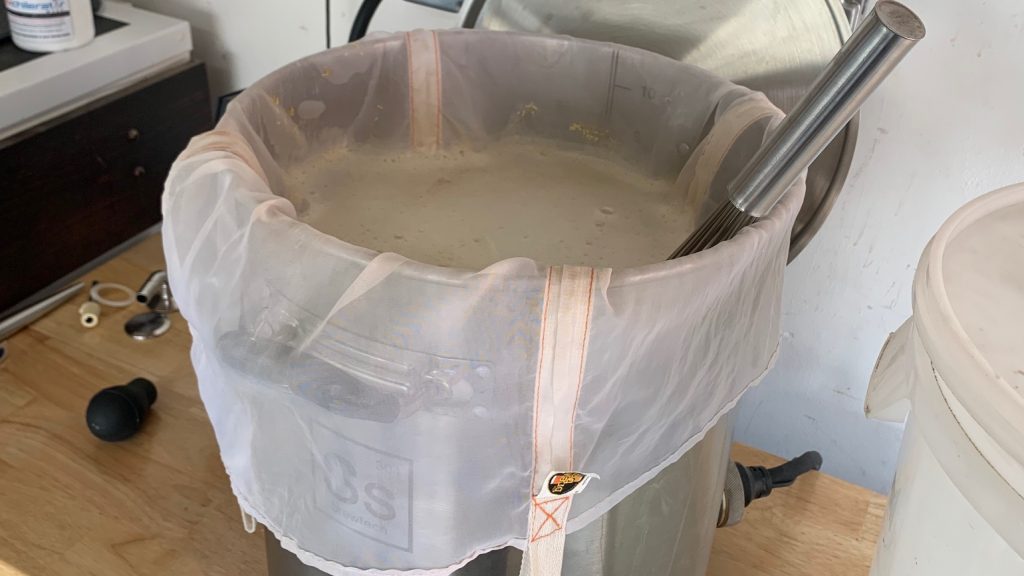
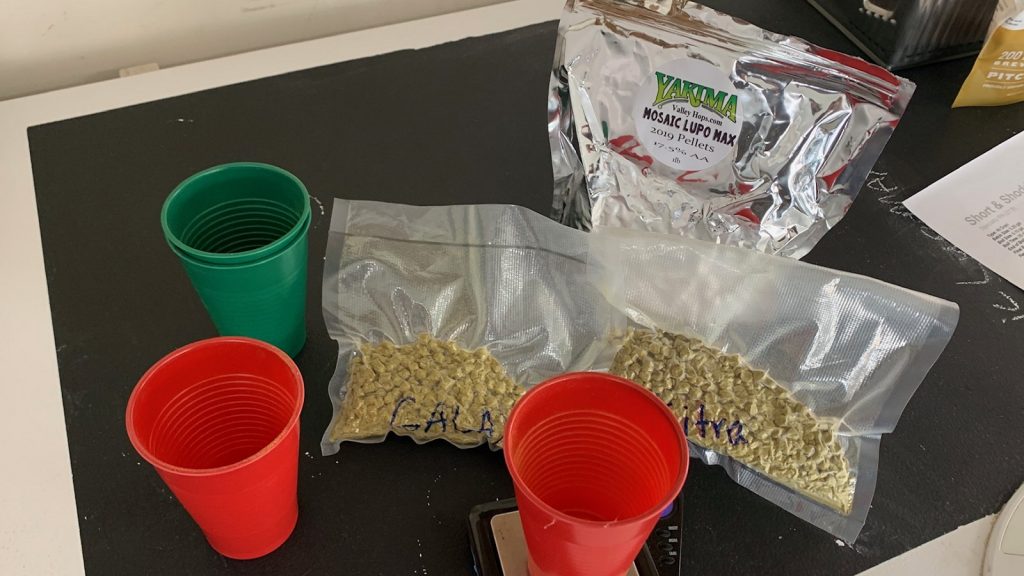

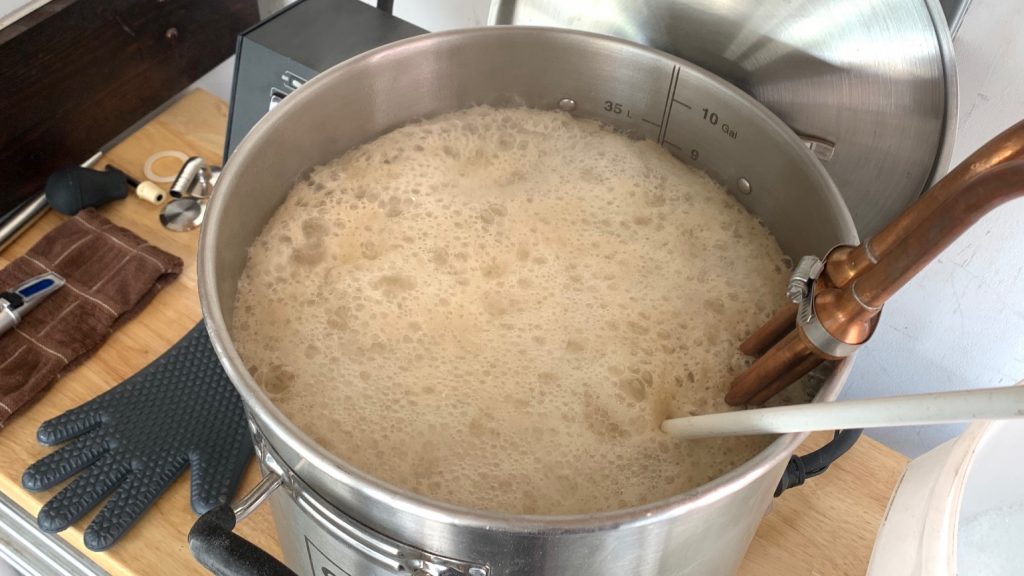

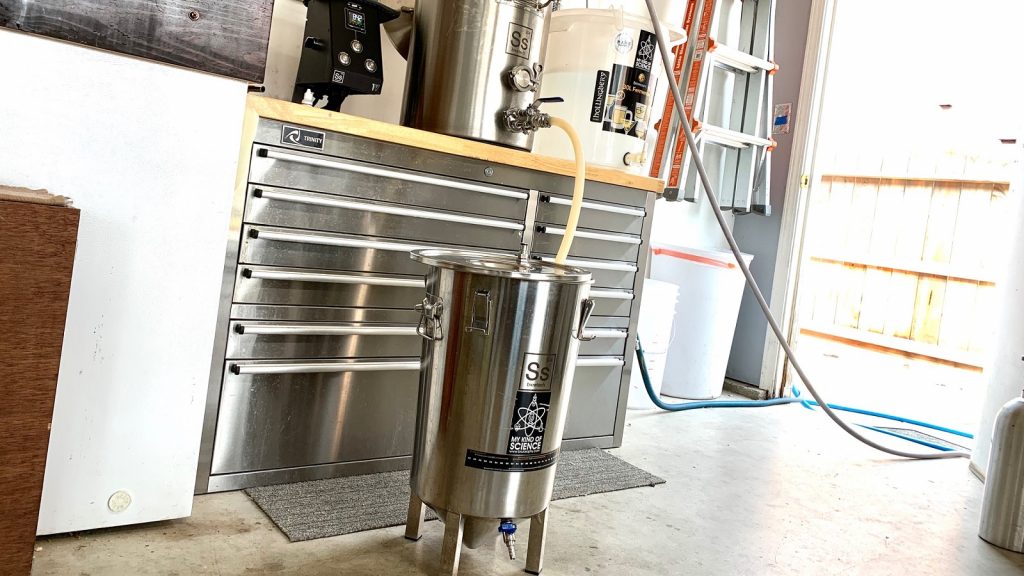

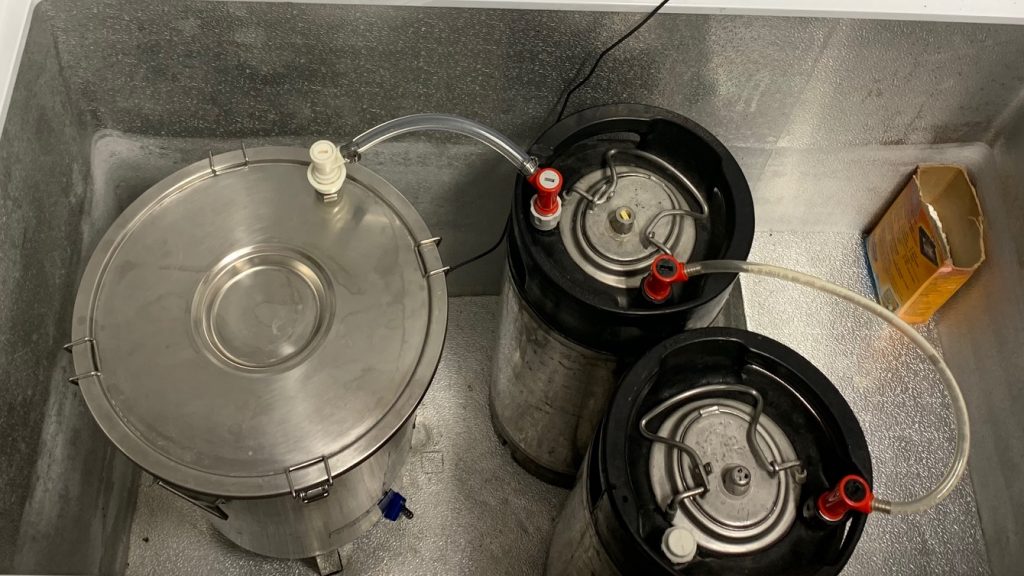
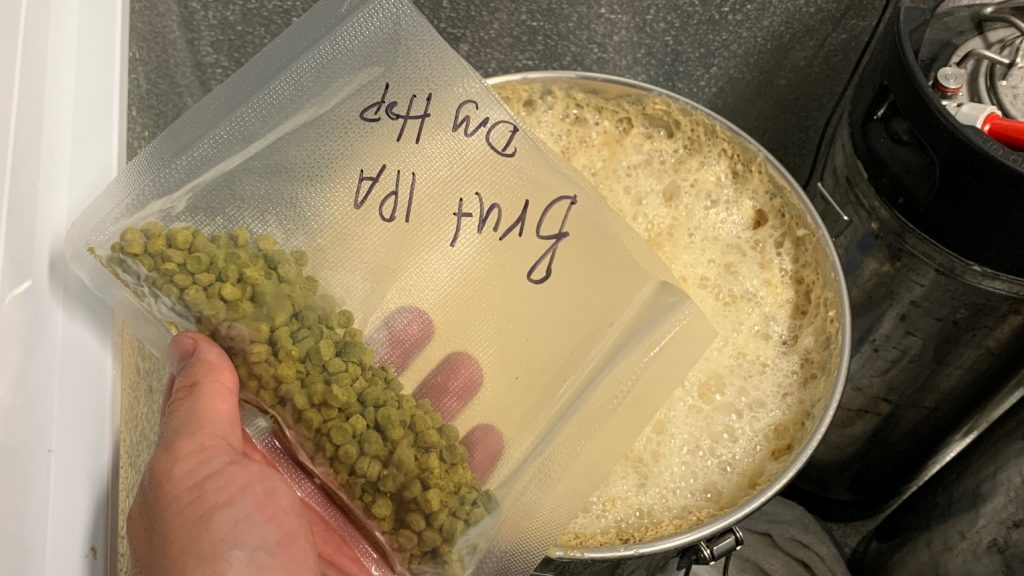
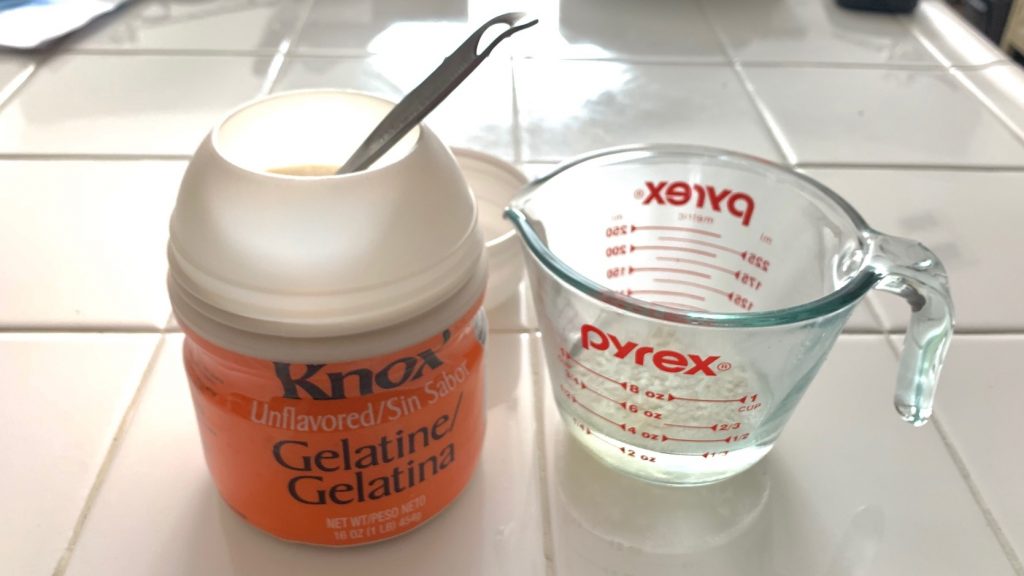
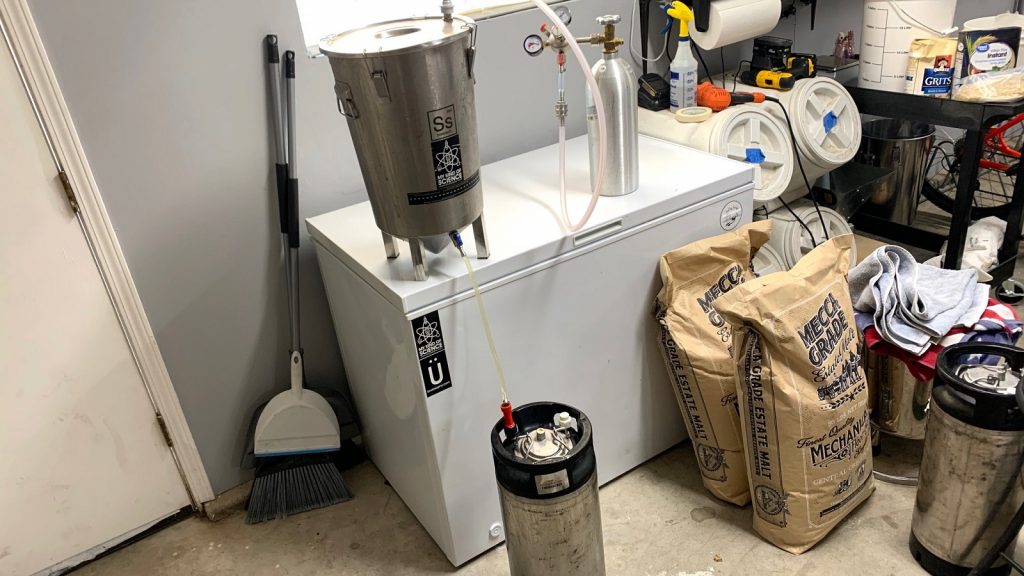
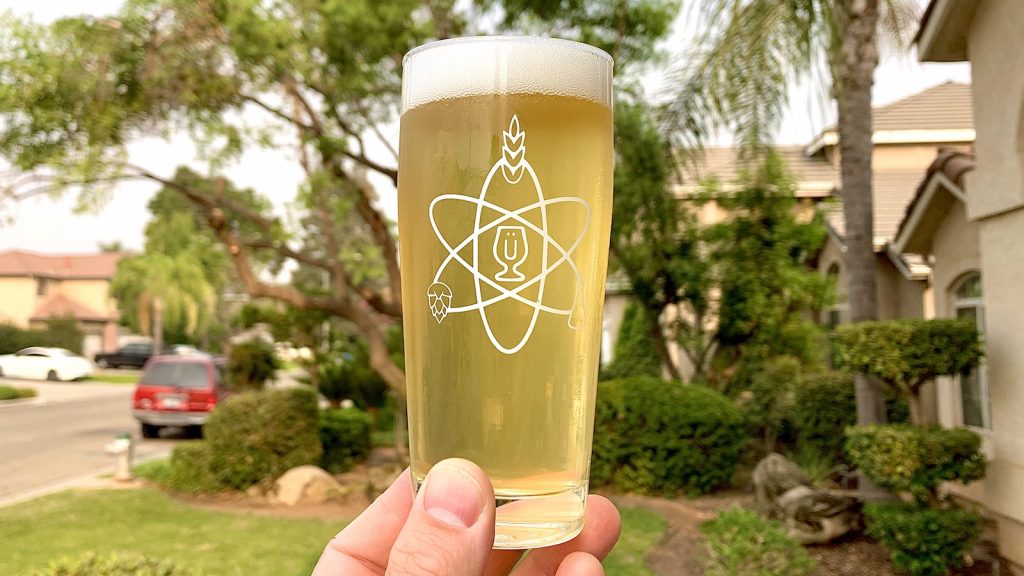











12 thoughts on “Short & Shoddy | Brut IPA”
Hey Marshall. When you do your 30 minute mash, do you cover the pot and insulate with a blanket, or are you able to retain a steady enough heat level just leaving it uncovered and open for the 30 minutes?
I’ve been wondering if a slight downward slide in mash temperature is a crucial factor or not. I’m trying to decide whether I can get away with not using my Coleman cooler to maintain temps for a 45 minute mash. Maybe just cover the pot and drape a blanket over it?
Love the site.Thanks for the information you guys provide!!!!
I leave it alone. There’s a slight drop, but nothing I worry about.
I think a shoddier approach would be to skip the enzymes and bump up the sugar a bit to compensate. If dryness is the goal, sugar seems like a simpler way to get there. I didn’t see this discussed much when Brut IPA was a hot topic. Too bad there’s not a group of dedicated homebrewing experimentalists out there to see if this would get you sufficiently similar results.
I’ve had good luck with white labs UltraFerm added to the fermenter only. I use a 1ml/gallon rate and hit an FG of .998 consistently.
That has been my experience in each of the three batches that I have brewed using Ultraferm.
I’ve brewed a ton with the Pelton and have never gotten any vanilla from it. Specifically I brew a lot of haze with both pelton and shaniko or wikiup. Think you are getting it from somewhere else.
It’s incredibly subtle and near impossible to detect in hoppier styles. This isn’t just something I’ve gotten from Pelton, I’ve talked to a lot of folks who perceive the same characteristics, and I’ve had beers brewed by others with Pelton that also have it. It’s not bad at all, in fact, I quite enjoy it. Again, it’s super subtle.
Well I currently am drinking a 100% pelton ale fermented with Lutra and not picking up any vanilla.3 oz hops in 9 gal. I’ve done 30 minute mashes all the way to triple decoctions with the stuff and its not there. To each their own! I would like to pull that out from it.
How much of that Novozymes Ondea Pro enzyme did you use? I note the dosage rate on their website but that’s a pretty wide range. Also, what’s the difference between this rather expensive stuff and plain old amalaye enzyme?
It’s on the recipe— 7 ml
Great article. Would be cool to see enzymes demo’d in a range if different grists.
Why do you think you got the disappointing haze? Just from the chill or due to the wheat maybe?
I just brewed a brut IPA. This post was really helpful. Thanks!
I’m super curious about the photo were you’re pressure transferring your beer to a keg. It looks like you’re using the airlock hole to hook up your CO2. Is this correct? If so, I’d really like to know details about how you’re able to make that work.